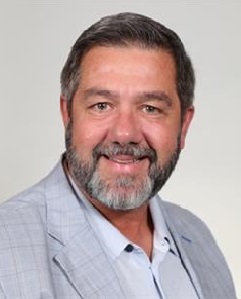It took almost no time for fraud, waste and abuse in the healthcare industry to become an epidemic of its own against the backdrop of the COVID-19 pandemic. Unscrupulous individuals looking to profit from the public health emergency have been taking advantage of accelerated changes in regulations, enhanced payments and loosened policies — and keeping the U.S. Department of Justice (DOJ) busy.
Last fall, the DOJ announced the largest healthcare fraud takedown in its history, Operation Rubber Stamp, charging 345 defendants with more than $6 billion in false and fraudulent claims to federal healthcare programs and private insurers, including more than $4.5 billion connected to telemedicine.
According to the DOJ, the defendants “allegedly paid doctors and nurse practitioners to order unnecessary durable medical equipment (DME), genetic and other diagnostic testing, and pain medications, either without any patient interaction or with only a brief telephonic conversation with patients they had never met or seen.” The suppliers then exchanged the orders for illegal kickbacks or bribes and billed federal healthcare programs.
Despite this massive takedown, exploitation of the COVID-19 pandemic has continued. In May 2021, the DOJ announced that it had identified another $143 million in false billing. And once again, telehealth providers were in the spotlight as a major contributor to this fraudulent activity. (To find more examples of pandemic-related fraud, visit the DOJ’s News and Noteworthy page.)
How can healthcare providers protect themselves and their patients from this malicious activity? Protiviti recently hosted a webinar, Healthcare Payer Fraud, Waste and Abuse — How to Prevent, Detect and Respond, devoted to this topic and invited a diverse panel of experts and thought leaders engaged in healthcare fraud prevention to share their observations and best practices. The panel also discussed the role of data and analytics, including artificial intelligence (AI) and advanced analytics, in detecting fraud. Here are a few takeaways and recommendations based on that conversation:
No shortage of creativity by healthcare fraudsters during COVID-19
Fraudsters love a crisis, and they’ll move fast to work any angle to turn a quick profit. Right from the start of the public health emergency, scammers were launching schemes to steal identities — for example, calling Medicare recipients to offer hand sanitizer or COVID-19 tests and telling them they needed to provide their beneficiary number first.
Some of the scams our panelists said that they’ve seen or their organizations have been investigating during the public health emergency include:
- Miscoding telehealth appointments so patient-provider interactions are billed as office visits and patients are charged copayments
- Pharmacies using emergency overwrite codes to bypass prior authorization requirements
- Prescribing of off-label drugs to treat COVID-19 symptoms
- Selling patients fake or authentic vaccination cards (like this pharmacist in Chicago allegedly did)
- Billing for vaccinations or COVID-19 tests for people who didn’t receive them or don’t even exist
- Excessive charges by labs for COVID-19 testing; these providers are taking advantage of the Coronavirus Aid, Relief, Economic Security (CARES) Act language that essentially allows labs to bill any amount for diagnostic testing as long as they list the cash price on their respective website
Digital tools can enable more proactive and targeted investigations
When asked what tools and best practices healthcare providers can employ to become more effective at preventing, detecting, and responding to incidents of healthcare fraud, our panelists pointed to technology — including advanced analytics, predictive analytics, AI and machine learning (ML). These tools can help uncover fraudulent activity and expedite investigations by allowing investigators to sift through and make sense of mountains of raw data efficiently and subjectively.
Advanced digital tools can also help healthcare providers be much more proactive, agile and creative in their investigations of fraud, waste and abuse. Traditional technology solutions have focused on data generated from claims payments because that area is ripe for fraud. But they’re highly manual to use, generally provide only retrospective views, and offer limited and inflexible analysis options. As healthcare data grows in volume and diversity by the minute, these solutions become only more outdated, driving more healthcare providers to consider adopting tools like AI and ML.
Effective use of these technologies requires having a clear use case from the outset. Taking a focused, project-based approach can be a highly effective strategy for searching through healthcare data to identify potential fraud. One panelist in our recent webinar suggested one project: examining provider specialties to find “Place of Service 2” (telehealth) miscoding or upcoding. For instance, if a provider has coded a physical therapy (PT) session as telehealth, further investigation may be warranted to determine whether the PT provider is delivering legitimate services to patients.
Public-private collaboration: A powerful antidote for healthcare fraud, waste and abuse
Fraud, waste and abuse in the U.S. healthcare system is a multibillion-dollar problem that imposes significant burdens on the quality and cost of patient care. Healthcare providers that hear about scams from their patients, employees and/or the medical staff should take a proactive stance toward sharing that information with law enforcement and relevant agencies so that these incidents can be investigated, and the public informed.
Data and information sharing about healthcare fraud incidents and trends also can be facilitated through relationships with resources like the Healthcare Fraud Prevention Partnership (HFPP), a voluntary public-private partnership among the federal government, state agencies, law enforcement, private health insurance plans and healthcare anti-fraud associations. Over time, public-private collaboration, supported by technology that allows for information sharing of protected health information (PHI) and personally identifiable information (PII) in compliance with data and privacy regulations, will make it much more challenging for healthcare fraudsters to execute and profit from their schemes.
To learn more about how healthcare providers can prevent, detect and respond to healthcare fraud more effectively, view our webinar for free on-demand. For an overview of the digital, innovation and advanced analytics solutions Protiviti provides to the healthcare industry, visit this page on our website.






